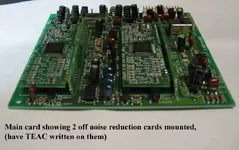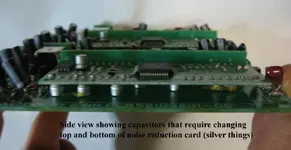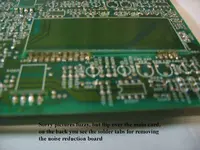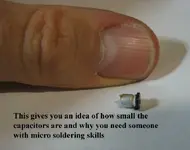witzendoz, good info. The tech replaced the capacitors on the cards linking to channels giving the most problems. I believe he also replaced transistors on the cards? I'm electronically challenged, but I believe that is what is was in addition to the capacitors. He was relatively sure this was going to fix things, but unfortunately did not. I don't think, and I'll tell you about that in a second. The top guys at TASCAM, at least the guys substantially familiar with reel to reel units and particularly the MSRs, have stated it is likely an IC problem, which they do not have access to the chips.
Now I have the MSR back and plugged it in today. Faulty arcing cable is fixed, everything sounds fine in idle, not meter readings at idle, etc. Now I went through the Dolby again, and it was like this before since I have owned the machine, and this is what I find. I know from my tech that the machine was recently tampered with, the internal guts. I wonder if they reversed the Dolby so it is on without engaging the switches and vice-versa. Without Dolby engaged, the machine is quiet, even as I recorded all 16 tracks simultaneously today, nothing but a little hiss, very small and only really noticeable when I am running the monitors at about 8 or 9 on a scale of 10. Now when I engage Dolby, you can hear very intermittent noises that you know are not supposed to be there, but the hiss alone is what you notice. ALOT of it at the same level. Nothing obscene, just kind of like my 488MKII WITHOUT it's NR engaged. Weird, but whatever the case, I think after putting all 16 channels into record and hearing the result, I don't think I will even come close to having a problem making this work for me, as there is not a lot of hiss.
Still need to order the GP9 tape, and plan on doing it today. Thanks for the links Beck



BTW, the tech said the same thing about the 456...sure use it as a scratch, but expect some high-frequency loss on it.
Haven't recorded anything new, I don't really plan to except for just referencing my drum kit levels until I get the GP9, but played back short drum tracks I already had on the tape, just scratch tracks, and man did I miss the sound of that machine. I absolutely love the sound of it, and that's even going through (I know, cough cough, shun shun) cheap Nady monitors.












